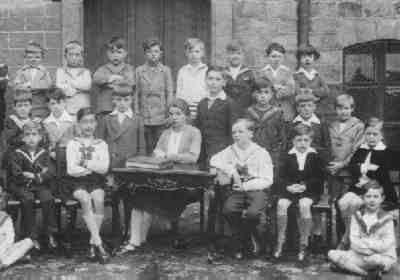
Figure 1.--This German class shows that boys age 8-10 wore mostly suits and sailor suits to class, but two boys wore velvet suits. |

|
German schools after the First World War continued the policy of allowing boys to wear the clothes parents selected for them. Given the horrors of the First World War it is understandable that German parents would have little reason to develop an interest in uniforms for school children, although the War did not affect British opinions on uniforms. Interestingly, sailor suits continued to be a popular style for boys, including older boys than wore sailor suits--both with short and long pants. This varied from Britain and America where it became increasingly rare in the 1920s for older boys to wear them. A few boys also wore smocks, at least in the early 1920s. Most boys that didn't wear sailor suits, however, wore short pants suits of various designs.
I do not have details on this class. I do not know what type of school it is or where it is located. The boys appear to be about 7 to 9 or even 10 years of age. They have a lady teacher. There may be one girl
in the photograph (the rear right), bit it may be a boy with long hair.
There is substantial variety of clothes worn by the boys. All the boys except two of the sailor suited boys appear to wear short pants. The
following styles are worn:
Smocks: None of the boys in this photograph appears to wear
smocks.
|
|
Related Chronolgy Pages in the Boys' Historical Web Site
[Main Chronology Page]
[The 1900s]
[The 1910s]
[The 1920s]
[The 1930s]
Navigate the German school pages
[Main school uniform page]
[Main school uniform national page]
[Main German school uniform page]
[Imperial Germany]
[Weimar Republic]
[NAZI era]
[Post-war Years]
[Unified Germany]
Navigate the Relate Boys Historical Clothing Style Pages
[Main country page]
[Long pants suits]
[Short pants suits]
[Lederhosen]
[Kneesocks]
[Eton suits]
[Jacket and trousers]
[Blazer
[School sandals]
Navigate the Boys' Historical Clothing Web Page
[Introduction]
[Activities]
[Biographies]
[Chronology]
[Cloth and textiles]
[Clothing styles]
[Countries]
[Topics]
[Bibliographies]
[Contributions]
[FAQs]
[Glossaries]
[Images]
[Links]
[Registration]
[Tools]
[Boys' Clothing Home]
